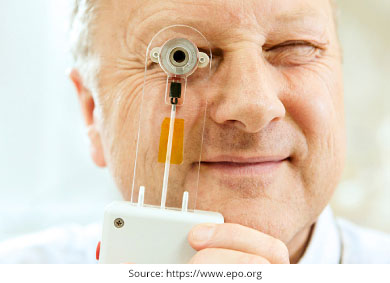 Precise control of focus is a fundamental aspect of good imaging, particularly for automated inspection and quality control applications. In the past, however, even the most robust industrial cameras could suffer from focus challenges that required precise re-calibration from an expert. The emergence of the new liquid lens technology promises to transform digital imaging, particularly for industrial and machine vision applications.
Precise control of focus is a fundamental aspect of good imaging, particularly for automated inspection and quality control applications. In the past, however, even the most robust industrial cameras could suffer from focus challenges that required precise re-calibration from an expert. The emergence of the new liquid lens technology promises to transform digital imaging, particularly for industrial and machine vision applications.
Liquid Lenses Are Driving a Quiet Revolution in Imaging
Liquid lenses are in position to become the next great evolution in imaging technology. They’ve been steadily gaining momentum among camera manufacturers since their award-winning 1995 debut in Europe.
Today’s liquid lenses are the brainchild of a French physicist-turned-entrepreneur, Bruno Berge. The lenses take their cue from the principles of the human eye: Instead of being adjusted with mechanical means, they can use electronics to alter the fluid, affecting change with virtually no moving parts.
Cameras using liquid lenses can focus quickly and precisely while remaining extraordinarily stable under real operating conditions. When the liquid lens is adjusted, it can cycle through all the potential positions of the liquid media to find the best possible focus almost instantly.
Where can you find liquid lenses today? For the moment, they’ve only been deployed in the industrial sector. They can be found scanning coded information or providing highly-sensitive security imaging. Experts are currently exploring the vast potential of these lenses in the medical field, including their use in advanced diagnostic imaging.
At the same time, other advancements, like MEMS technology, are making it easier, faster, and cheaper to develop brand new approaches to imaging. Though it’s hard to estimate when it will happen, liquid lenses will soon reach a “critical mass” and become available to execute precise digital imaging across a much wider range of equipment and applications.
- About Us
-
Vision Products
- Market Applications
-
Resources
- Signup for Emails
-
eBook Library
- Top 6 Considerations When Selecting a High-Performance CMOS Sensor
- On-Chip Polarization: A Better Way to Polarize Light in Machine Vision Applications
- Top 6 Questions to Help You Select the Right Machine Vision Distributor
- How High-Quality Machine Vision Cables Maximize Machine Vision System Performance
- Vision Integration
- Videos
- History of Machine Vision
- Global Machine Vision Interface Standards
- Educational
- The Vision Blog
